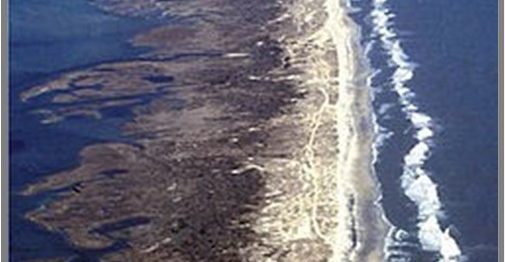
DID YOU KNOW that the Outer Banks is made up of barrier islands that move?
Barrier Islands of the Outer Banks
North Carolina borders the coast, and about 90 percent of the coastline is guarded by barrier islands. There are about eighteen of these islands bordering its coastal plain. Most simply put, they act as barriers to land, protecting it from ocean waves. They are able to soak in the waves that could cause damage to the mainland. Even when the waves are very large, the barrier islands can adapt by changing shape to better absorb the waves.
While barrier islands erode, it does not mean that they are disappearing. Barrier islands move and migrate toward the land. As the ocean shoreline retreats due to human activities and sea-level rise, the lagoon side of the island widens due to overwash and the merging of tidal deltas and the elevation of the central part of the island.
Sand supply
Barrier islands are made of sand that came from a beach by way of wind or storm over wash
As you can see, sand supply is very important to barrier islands. When you walk on barrier island sand, you are walking, in part, on quartz and other minerals that come from river sediment that has been covered by the ocean over time. Waves wash over what once were estuaries and pick up the ancient particles and deposit them on the beach to mix with the sand. Unlike the Outer Banks, most barrier islands in the world are undeveloped. There are approximately 2,500 barrier islands in the world except in Antarctica.
